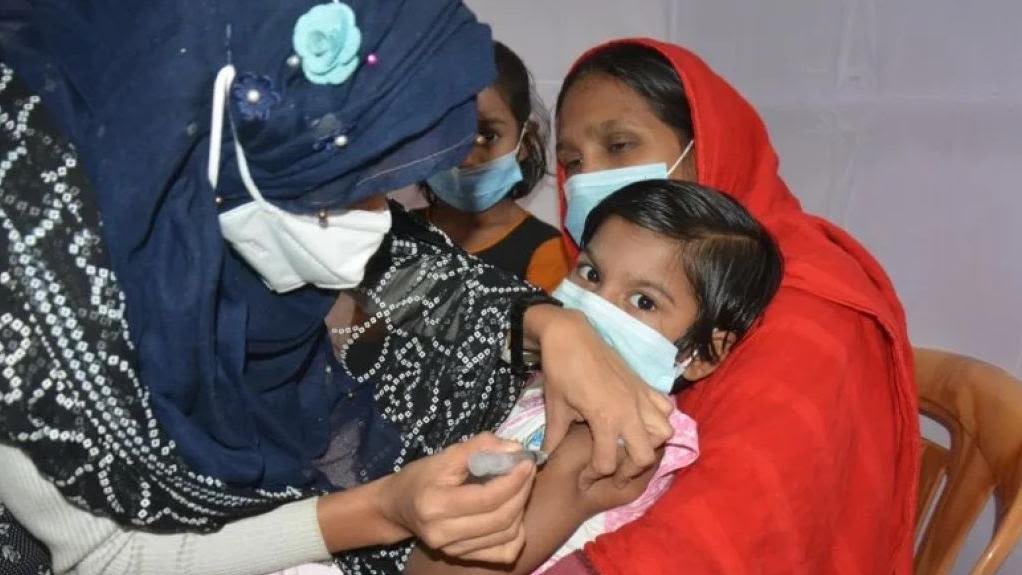

The TyVOID study, published in the Lancet, measured the effectiveness of a single dose TCV in Bangladeshi children over a five-year period and confirmed the high vaccine protection (80-96%) within two years of vaccination in all children.
Three to five years after vaccination, the study found a three-fold increase in typhoid incidence in children who received TCV in 2018/2019 and those who received it in 2021, suggesting a decline in vaccine effectiveness, most pronounced in the very young. The data suggested children vaccinated at two years or older were still well protected (59-85%) at 3-5 years post vaccination however, a more significant decline in protection was seen in children vaccinated at under two years of age, suggesting that a booster dose for these children might be needed for sustained protection.
Xinxue Liu, Associate Professor of Medical Statistics and Epidemiology at the Oxford Vaccine Group, and one of the senior authors of the study, said: ‘Typhoid is a serious and life-threatening enteric fever that remains a substantial public health issue for children and adolescents in low- and middle-income countries. TCV offers the best chance to reduce the burden of typhoid, helping to reduce transmission and limiting further evolution of drug-resistant strains. This study provides additional information for policy makers on longer-term TCV protection and the importance of continued investigation and updated guidance.’
Dr Firdausi Qadri, Senior Scientist at the Infectious Diseases Division at the International Centre for Diarrhoeal Disease Research, Bangladesh (icddr,b), and first author on the study, said: ‘This TyVOID study followed the original TyVAC cluster randomised controlled trial population for another two and a half years after unmasking in 2021. The results indicate a decay in antibody concentrations in different age groups and suggest that a booster dose around school entry age for children vaccinated while younger than 2 years could be considered, to sustain the protection from TCV through the school years when children are at greatest risk of typhoid.’
Read the full story on the University of Oxford website.
more recommended stories
 Coffee and Cognitive Function: Evidence Review
Coffee and Cognitive Function: Evidence ReviewA new narrative review in Cureus.
 Colorectal Cancer Screening Rates Low in Adults 45–49
Colorectal Cancer Screening Rates Low in Adults 45–49Recent UCLA research reveals that colorectal.
 Gut Immune Cells and Long-Lasting Antiviral Protection.
Gut Immune Cells and Long-Lasting Antiviral Protection.Breakthrough Findings on How Gut Immune.
 Mild Pancreatic Duct Dilatation Signals Higher Cancer Risk
Mild Pancreatic Duct Dilatation Signals Higher Cancer RiskEarly Structural Changes Offer Critical Clues.
 How the Uterus Senses Force During Labor: New Insights
How the Uterus Senses Force During Labor: New InsightsA new study published in Science.
 Fat-Free Mass and Brain Outcomes in Preterm Babies
Fat-Free Mass and Brain Outcomes in Preterm BabiesEarly Fat-Free Mass May Hold the.
 How Hormones Shape Dopamine-Driven Learning
How Hormones Shape Dopamine-Driven LearningNYU Study on Hormones and Cognitive.
 Protein Pair Guides Chromosome Alignment in Mitosis
Protein Pair Guides Chromosome Alignment in MitosisKey Points A joint research team.
 Intensive mind-body retreat rapidly alters brain function
Intensive mind-body retreat rapidly alters brain functionAn intensive mind-body retreat combining meditation,.
 Citrus and Grape Compounds Help Prevent Type 2 Diabetes
Citrus and Grape Compounds Help Prevent Type 2 DiabetesA new clinical trial highlights the.

Leave a Comment